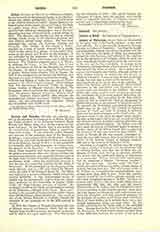

Ischia, Diocese of (ISCLANA), suffragan to Naples, has for its territory the island of Ischia, in the Mediterranean Sea, which, geologically, forms a continuation of the volcanic district of Naples. Monte Epomeo, the highest point of the island (about 2570 feet), has been an extinct crater since 1302. The island has frequently been visited by earthquakes; one of the most disastrous was that of Casamicciola, a small village, in 1883. The island is very fertile and rich in mineral springs, which, owing to the pleasant situation and mild climate, attract many visitors. The two most important hot springs are Fontana d’Ischia and Formello. The capital of the island is Ischia, situated on a rock of basalt, crowned by a castle, which today serves as a prison. It was called Pithecusae by the Greeks and Enaria by the Romans. It was colonized by the Eubceans. In 474 B.C. it was taken by Hiero I, King of Syracuse, and in 326 by the Romans. The Emperor Augustus gave it to Naples, in exchange for Capri. In the Middle Ages it was often devastated (in 813 by the Saracens; in 1135 by the Pisans). In 1496 it was a refuge for Ferdinand II of Naples, fleeing before Charles VIII of France. In 1807 it was occupied by the British and Sicilians, and was used as a point of defense against the French. In 1179 the first Bishop of Ischia was appointed, Pietro, present at the Third Lateran Council. Other bishops were Fra Bartolomeo Borsolari (1359), an Augustinian, brother of Blessed Giacomo Borsolari, the Dominican, who is buried in the church of S. Domenico; the learned Spanish Cistercian, Michele Cosal (1453); Girolamo Rocca (1672), who restored the cathedral and bishop’s residence; Michele Cotignola (1692), who also embellished the cathedral. Ischia has 14 parishes with 32,000 souls.
U. BENIGNI

